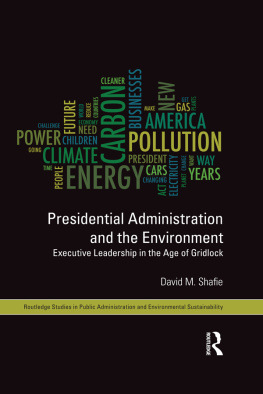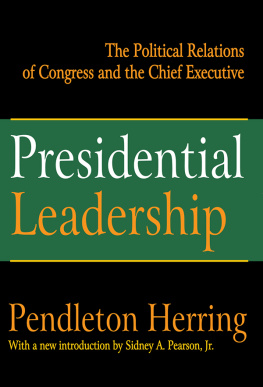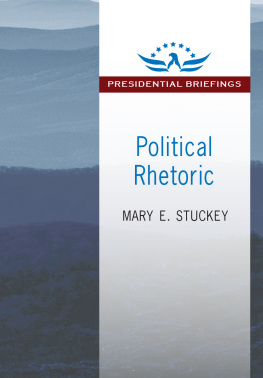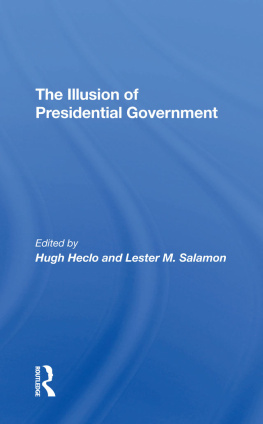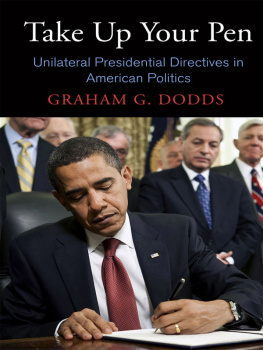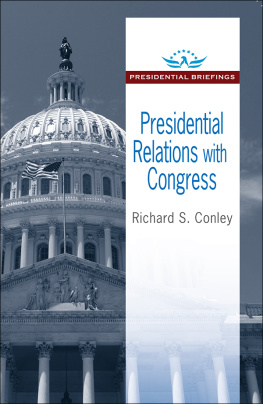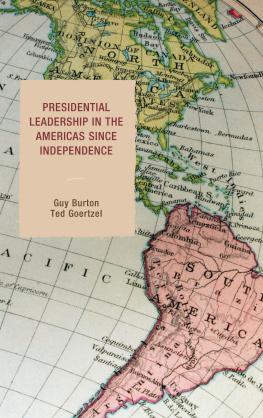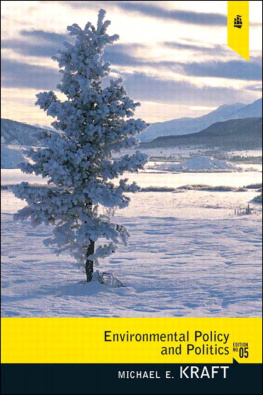In Presidential Administration and the Environment, David M. Shafie uses data from presidential libraries, executive orders, and interviews with key interest group leaders and agency staff to examine largely unexplored questions about how presidents use executive authority to advance their environmental policy agendas in the face of persistent legislative gridlock. This is an original, perceptive, and significant assessment of executive leadership in public lands management, water policy, toxic chemicals, and climate change, with particular attention given to the presidencies of Bill Clinton, George W. Bush, and Barack Obama.
Michael E. Kraft, University of Wisconsin-Green Bay
Presidential Administration and the Environment is a comprehensive review of environmental policy in a constantly changing and combative political landscape. In an easy-to-read analysis, David M. Shafie not only reviews the past twenty years of environmental policymaking but also provides valuable insights for future strategies in dealing with critical environmental issues of our time.
Michael P. Dombeck, Chief of the U.S. Forest Service, 19972001 & Director of the Bureau of Land Management, 19941997
Presidential Administration and the Environment
After the sweeping environmental legislation passed in the 1970s and 1980s, the 1990s ushered in an era when new legislation and reforms to existing laws were consistently caught up in a gridlock. In response, environmental groups became more specialized and professional, learning how to effect policy change through the courts, states, and federal agencies rather than through grassroots movements. Without a significantly mobilized public and with a generally uncooperative Congress, presidents since the 1990s have been forced to step into a new role of increasing presidential dominance over environmental policies. Rather than working with Congress, presidents instead have employed unilateral actions and administrative strategies to further their environmental goals.
Presidential Administration and the Environment offers a detailed examination of the strategies and tools used by U.S. presidents. Using primary sources from presidential libraries such as speeches and staff communications, David M. Shafie analyzes how presidents such as Bill Clinton and George W. Bush have used alternative executive approaches to pass environmental policies. From there, Shafie presents case studies in land management, water policy, toxics, and climate change. He analyzes the role that executive leadership has played in passing policies within these four areas, explains how this role has changed over time, and concludes by investigating how Obamas policies compare thus far with those of his predecessors.
Shafies combination of qualitative content analysis and topical case studies offers scholars and researchers alike important insights for understanding the interactions between environmental groups and the executive branch and the implications for future policymaking in the United States.
David M. Shafie is an assistant professor in the Department of Political Science at Chapman University.
Routledge Studies in Public Administration and Environmental Sustainability
Edited by Daniel J. Fiorino and Robert F. Durant, American University
Climate change, loss of habitat and biodiversity, water security, and the effects of new technologies are placing pressure at all levels of government for effective policy responses. Old policy solutions and the administrative processes associated with them not only seem inadequate for managing environmental and energy sustainability issues, but even counterproductive. The challenge for societies worldwide often is how best to harness in the public interest the dynamism of markets, the passion and commitment of nonprofit and nongovernmental organizations, and the public interestoriented expertise of career civil servants at all levels of government. Routledge Studies in Public Administration and Environmental Sustainability focuses on core public administration questions as they relate to the topics of environmental, energy, and natural resources policies, which together comprise the field of environmental sustainability.
1 Presidential Administration and the Environment
Executive Leadership in the Age of Gridlock
David M. Shafie
First published 2014
by Routledge
711 Third Avenue, New York, NY 10017
and by Routledge
2 Park Square, Milton Park, Abingdon, Oxon OX14 4RN
Routledge is an imprint of the Taylor & Francis Group, an informa business.
2014 Taylor & Francis
The right of David M. Shafie to be identified as author of this work has been asserted by him in accordance with sections 77 and 78 of the Copyright, Designs and Patents Act 1988.
All rights reserved. No part of this book may be reprinted or reproduced or utilized in any form or by any electronic, mechanical, or other means, now known or hereafter invented, including photocopying and recording, or in any information storage or retrieval system, without permission in writing from the publishers.
Trademark Notice: Product or corporate names may be trademarks or registered trademarks and are used only for identification and explanation without intent to infringe.
Library of Congress Cataloging-in-Publication Data
Shafie, David M.
Presidential administration and the environment : executive leadership
in the age of gridlock / David M. Shafie.
pages cm. (Routledge studies in public administration and
environmental sustainability)
1. Environmental policyUnited StatesHistory20th
century. 2. Environmental policyUnited StatesHistory21st
century. 3. Executive powerUnited States. 4. Executive
legislative relationsUnited States. 5. Environmental law
United States. 6. EnvironmentalismPolitical aspectsUnited
States. 7. United StatesPolitics and government1989 I. Title.
GE180.S398 2013
363.7060973dc23
2013033406
ISBN: 978-0-415-62666-8 (hbk)
ISBN: 978-0-203-10255-8 (ebk)
Typeset in Sabon
by Apex CoVantage, LLC
This book is dedicated to Tara, who will be the beneficiary of the choices we make today.
Contents
A number of people contributed to this book, and it certainly would not have been possible without them. Matthew Cahn was a source of advice and encouragement and helped persuade me that it was an idea worth pursuing. Another colleague, Lori Cox Han, supported my interests and has been a guide on my adventure into the scholarship of the presidency.
The contributors include my research assistants in the Henley Social Science Research Lab at Chapman University: Tiana-Renee Silva, Brett Robertson, and Sara Juarez. Christopher Romanowski of the Environmental Science and Public Policy program at Chapman also provided valuable research assistance.
The librarians and staff of the William Clinton Presidential Library helped me locate documentary materials. I received an institutional grant from Chapman University for this archival research, and I am grateful to Deans Patrick Quinn and Menas Kafatos for supporting my travel for research and for sending me to Copenhagen.
I wish to thank Darcy Bullock and Natalja Mortensen and the staff at Routledge for guiding me through the process. I am especially grateful for the generosity of series editors Robert Durant and Daniel Fiorino for providing so much constructive feedback on the draft.
Lastly, I want to thank those who made this book possible by reading versions of the manuscript and providing thoughtful criticism and moral support throughout the writing process. In that regard, Ann Gordon, Sarah Gordon, and Audrey Gordon each contributed to this project in their own special ways.

